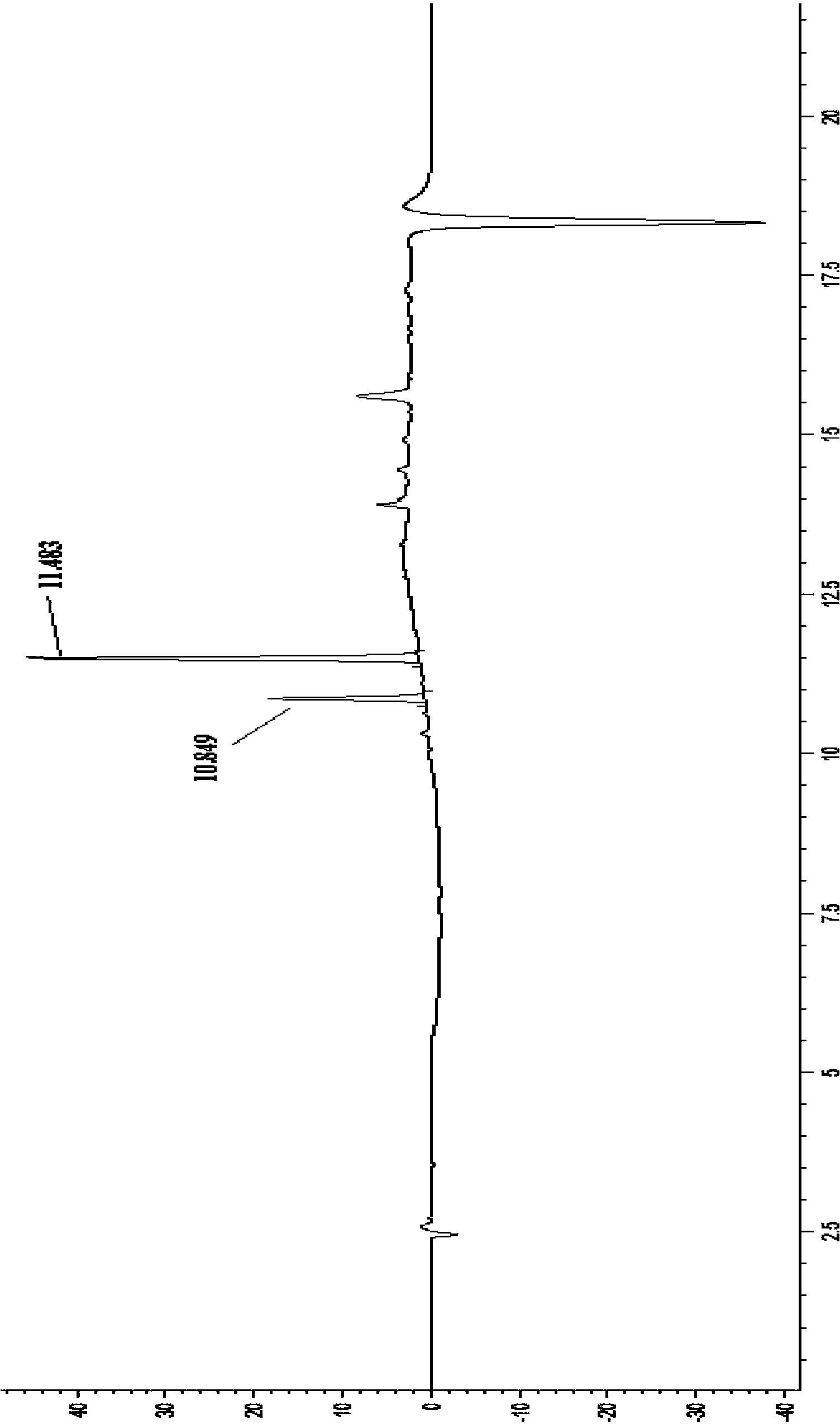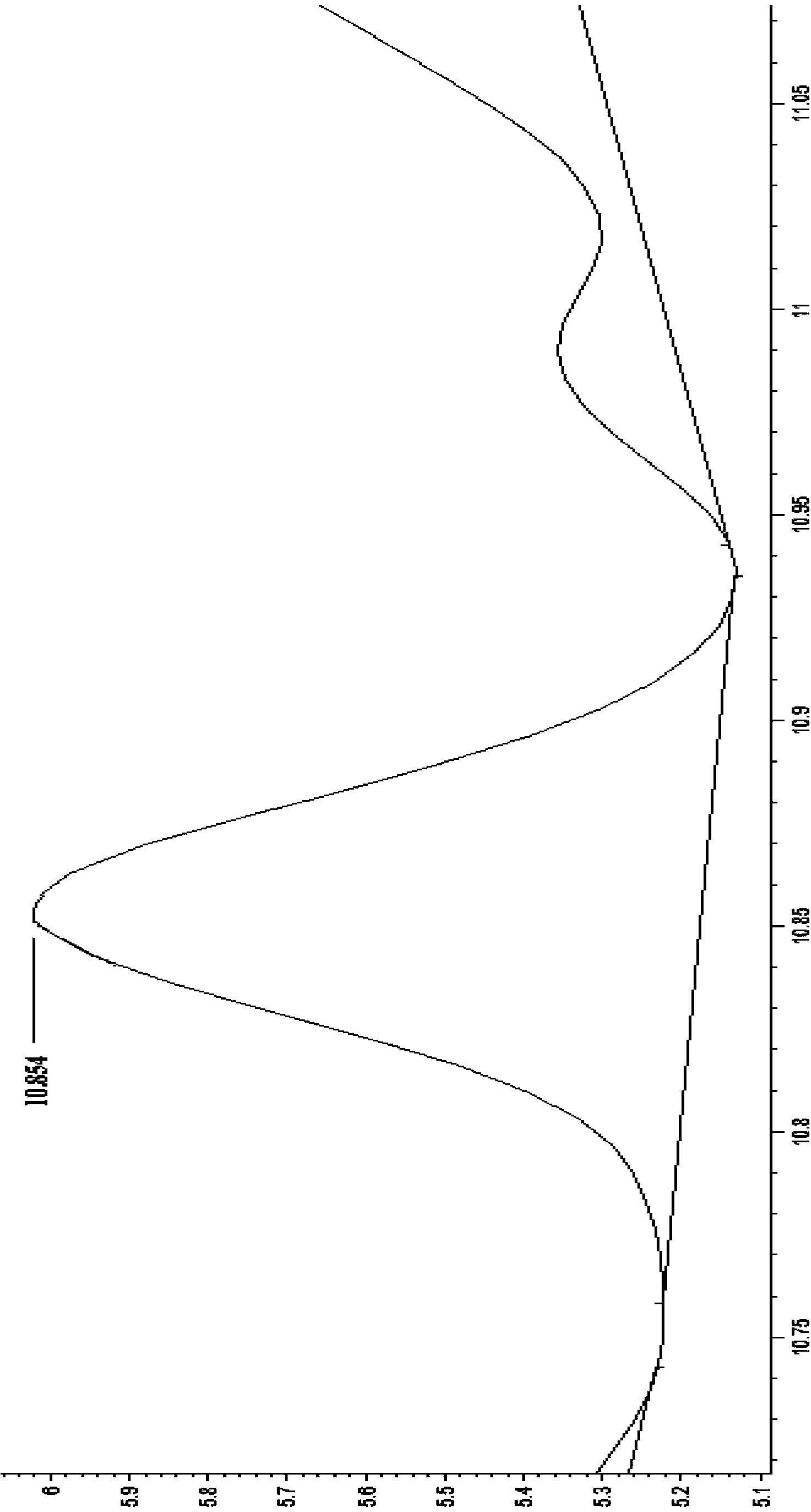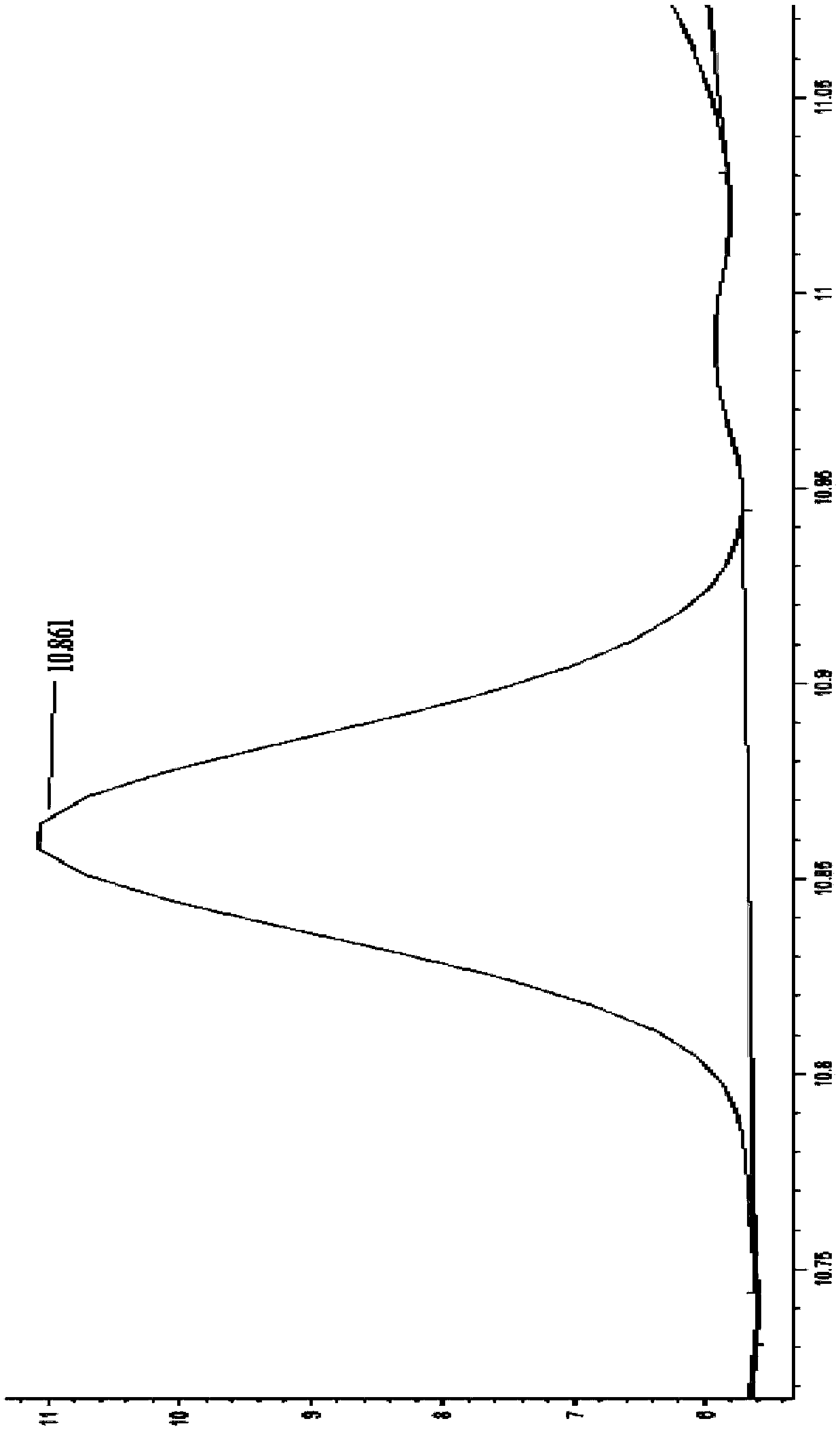Method for determining turfgrass endogenous hormone
A technology of endogenous hormones and turfgrass, applied in the direction of measuring devices, instruments, scientific instruments, etc., can solve the problems of complex operation, low recovery rate, unfavorable for accurate determination of plant endogenous hormone content, etc., to achieve good repeatability, Effects of improving recovery rate and shortening sample loading time
- Summary
- Abstract
- Description
- Claims
- Application Information
AI Technical Summary
Problems solved by technology
Method used
Image
Examples
Embodiment 1
[0054] (1) Select representative turfgrass (Poa annua and Lolium: separate extraction and detection, both using the method of this example) as samples. Cut 0.3g of fresh leaves, add liquid nitrogen and grind until pulverized.
[0055] (2) Add 3mL sodium phosphate buffer solution (0.05M, pH=7.0, containing 0.02% sodium diethyldithiocarbamate; keep the leaf weight g: extract volume mL=1:10), transfer to a 10mL centrifuge tube After shaking at 4°C for 1h, adjust the pH to about 2.6 with 1M hydrochloric acid, then add 3mL of dichloromethane, and shake at 4°C for 1h.
[0056] Note: Plant endogenous hormones are very unstable, so ensure that the shaking process is always maintained at 4°C.
[0057] (3) Take out the centrifuge tube, centrifuge the extract obtained in the previous step at 10,000 rpm for 10 min, remove the supernatant (about 3 mL) and transfer it to another centrifuge tube. Add 3 mL of dichloromethane to the residue, continue shaking at 4°C for 1 h, centrifuge again ...
Embodiment 2
[0079] Lawn grass is bluegrass grass, and other conditions are identical with embodiment 1, difference is:
[0080] The mass volume ratio of lawn grass to sodium phosphate buffer is 1:8 (g:mL);
[0081] The concentration of sodium diethyldithiocarbamate in the sodium phosphate buffer solution is 0.05%;
[0082] The volume ratio of phosphate buffer and dichloromethane is 3:4;
[0083] Conditions for extracting with sodium phosphate buffer: after extracting at 4°C for 0.8h, adjust the pH to 3.0 with 1M hydrochloric acid;
[0084] The conditions for the first extraction with dichloromethane and the extraction of the residue with dichloromethane: extract at 4°C for 1.2h;
[0085] The conditions for the two centrifugations include: take out the centrifuge tube, centrifuge at 8000 rpm for 15 min, remove the supernatant (about 3 mL), and transfer it to another centrifuge tube. Add 3mL of dichloromethane to the residue, continue shaking at 4°C for 1.2h, centrifuge again (15min at 8...
Embodiment 3
[0087] Lawn grass is used ryegrass, and other conditions are identical with embodiment 1, difference is:
[0088] The mass volume ratio of lawn grass to sodium phosphate buffer is 1:12 (g:mL);
[0089] Conditions for extracting with sodium phosphate buffer: after extracting for 1.2 hours at 4°C, adjust the pH to 2.5 with 1M hydrochloric acid;
[0090] The conditions for the first extraction with dichloromethane, and the extraction of the residue with dichloromethane: extraction at 4°C for 0.8h;
[0091]The conditions for the two centrifugations include: take out the centrifuge tube, centrifuge at 12000 rpm for 8 min, remove the supernatant (about 3 mL), and transfer it to another centrifuge tube. Add 3mL of dichloromethane to the residue, continue shaking at 4°C for 0.8h, centrifuge again (centrifuge at 12000rpm for 8min), and combine the supernatant;
[0092] To dissolve the eluent dried in vacuum, a mixed solution of methanol and acetic acid was used, wherein the volume ra...
PUM
| Property | Measurement | Unit |
|---|---|---|
| recovery rate | aaaaa | aaaaa |
Abstract
Description
Claims
Application Information
 Login to View More
Login to View More - R&D
- Intellectual Property
- Life Sciences
- Materials
- Tech Scout
- Unparalleled Data Quality
- Higher Quality Content
- 60% Fewer Hallucinations
Browse by: Latest US Patents, China's latest patents, Technical Efficacy Thesaurus, Application Domain, Technology Topic, Popular Technical Reports.
© 2025 PatSnap. All rights reserved.Legal|Privacy policy|Modern Slavery Act Transparency Statement|Sitemap|About US| Contact US: help@patsnap.com



